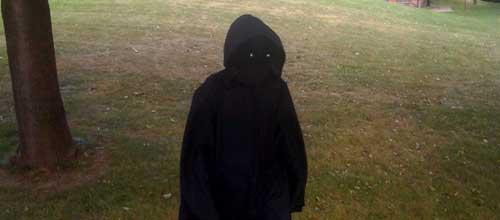| ESSAY |

|
Can You Farm?
•
"They want me to do shit that is related to comedy, but it’s not comedy, man. " |
| COLUMN |

|
TOP FIVE
•
"It’s difficult not to reveal my latent Tolkien obsession when discussing Fonthill..." |
 |
| INTERVIEW |

|
Jeffrey Lewis, Show Me the Way.
•
" Feeling lost, alone, and lousy I was about to sit down with the maestro troubadour of feeling lost, alone, and lousy.
" |
| FICTION |

|
Day Four in the Bomb Shelter and other work.
•
"Maya and Angela laughed about it and then they stopped laughing.
Then they talked about Jay Z. " |
| THIS MONTH |
|
I took two children, ages three and five to the PMA recently.
It is hard to impart the relevance of the museum’s collection to pre-kindergarteners without explaining concepts like obsolescence and entropy, myth and historical narrative. We can wander through 20th century painting easily enough, discussing color and abstraction—playing I SPY with a Klee or exaggerating awe at a Rothko. A Cezanne nude isn’t even a problem for these kids; they actually aren’t quite old or affected enough to recoil at breasts yet.
It is, surprisingly, the hall of Constantine tapestries on the second floor that confronted us with sticky existential issues. Constantine triumphs over Maxentius; Constantine burns memorials; Constantine destroys pagan idols; Constantine slays a lion. As we wander around the Mezzanine, each intricate tapestry, each masterful Rubens composition merits an explanation that seems to always end in some inevitable death or destruction. One particularly branded in my memory is a tragic, multi-figure ship scene—bodies cascading into woven waves and hands grasping clinging—the mastery of Rubens that we intellectualize in art school. The kids have more questions, though, and a secular upbringing that could deny any moralistic read of the work—I couldn’t say, “Well, boys, Constantine was the first Roman emperor to convert to Christianity—so this death and destruction was for our buddy Jesus!!” In fact, that may have been a simpler and less haunting narrative. Instead, I carefully and gently explained these ancient modes of conflict resolution. “Constantine did not like what these guys believed, and instead of talking it out like we do, they used swords.” And the lion? “I don’t know why he would kill a lion, you guys.” Diverting their attention from the difficult allegory to the breathtaking craftsmanship and composition, or the astounding antiquity was nearly impossible. And as we walked away from those tapestries, the youngest boy asked something so heart wrenching and unexpected: “Am I going to die?” His older brother chimed in, with tenderness and real wisdom. We explained that a long, long time from now—after we’ve all grown big and smart and strong and old—we will not be able to live anymore, and yes, we will die. These answers, however complicated, or nuanced, or Disney-inspired, didn’t satisfy his questions. He was darkly fixated on the topic, stuck on it, exhaustively asking as we walked to the car and then throughout our drive home. He alternated, asking about each of his family members, asking about me, his babysitter, and about himself—then concluding, “…Everyone will die?” Yes, T. It is scary, and something we all try not to think about. Eventually, his unrelenting question made tears spring to my eyes. T’s older brother and I sang a song or made up a story or something—I actually don’t remember what device we used in order to distract and entertain. I think about this moment today, as I skim Maurice Sendak’s New York Times obituary. He fully understood T’s impulse. That dark, inconsolable questioning. Isn’t it so beautiful and perfect, the way Sendak is unafraid to take us to that place—of wildness and wonderment, total insecurity and bleakness? We found it in the Rubens tapestries, and we find it every time we read his classic, indispensable children’s stories. It is all the more moving and poignant to think about each child’s mind so transported by Where the Wild Things Are, or In the Night Kitchen—and those few adult censors uncomfortable by Sendak’s black humor and unable to face the wildness that is living. Sendak described his most recent illustrated book, Bumble-ardy, as “a combination of the deepest pain and the wondrous feeling of coming into my own.” (NPR) It is no coincidence that the book’s lively, hedonistic pig party illustrations recall a Baroque sensibility, all the tension and movement of a Rubens’s drawing with animated, grotesque bodies entwined. Sendak’s wondrous feeling is all I can hope for each of his readers; and the inevitability of a deep pain is something my two young friends may already sense. That’s okay. Even as T grows up and forgets his museum afternoon of existential questioning, I will remember. "I have nothing now but praise for my life. I'm not unhappy. I cry a lot because I miss people. They die and I can't stop them. They leave me and I love them more. ... What I dread is the isolation. ... There are so many beautiful things in the world which I will have to leave when I die, but I'm ready, I'm ready, I'm ready." Emily Davidson |
|||
|
